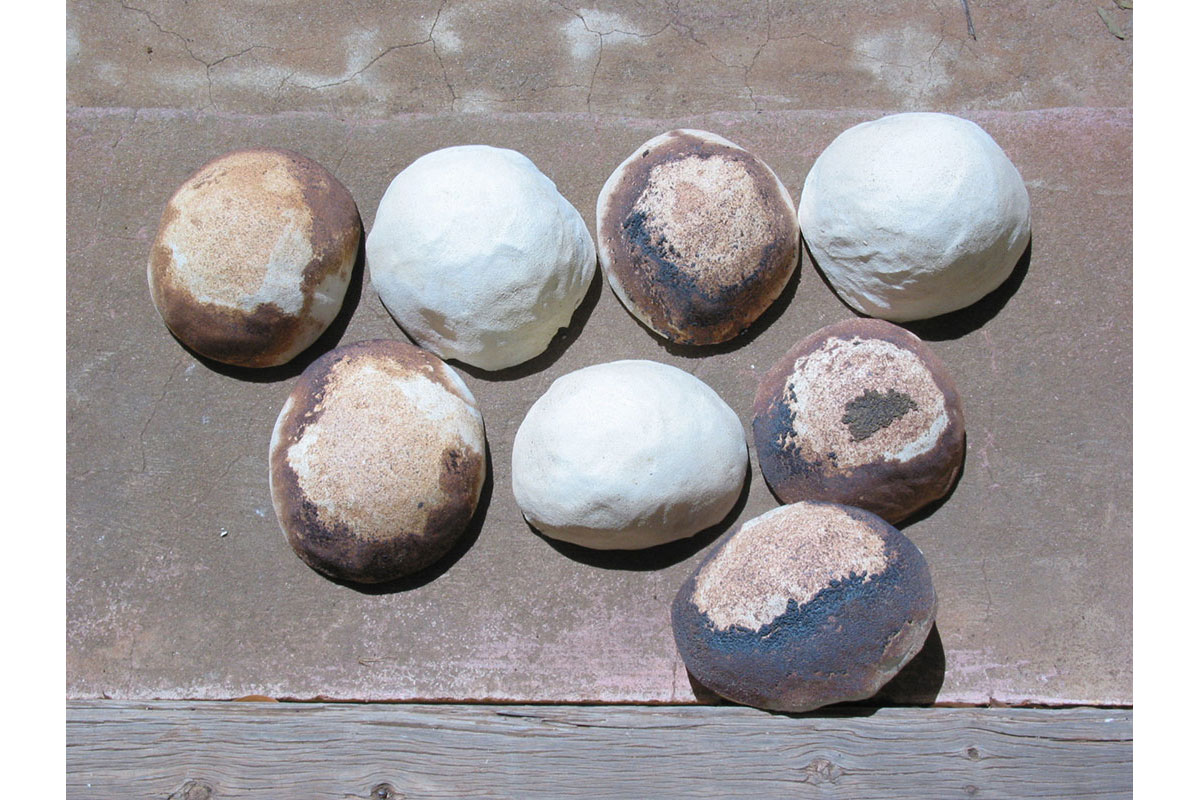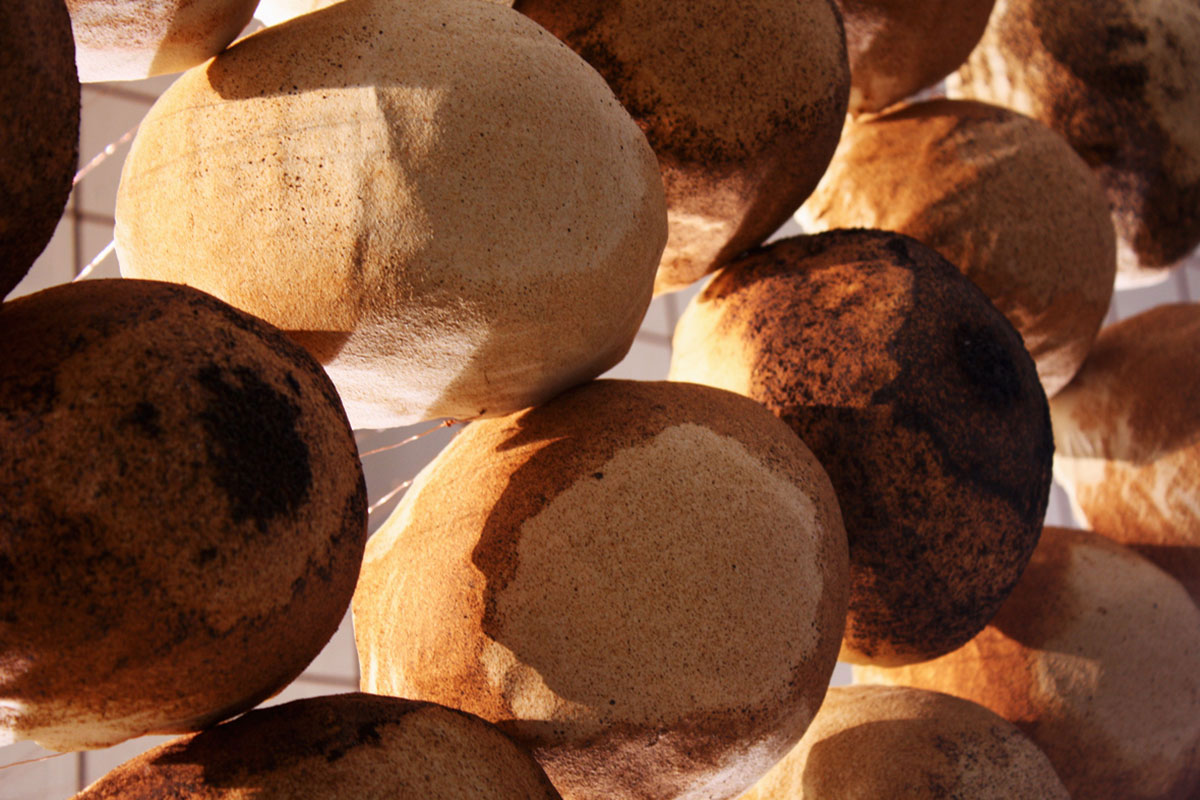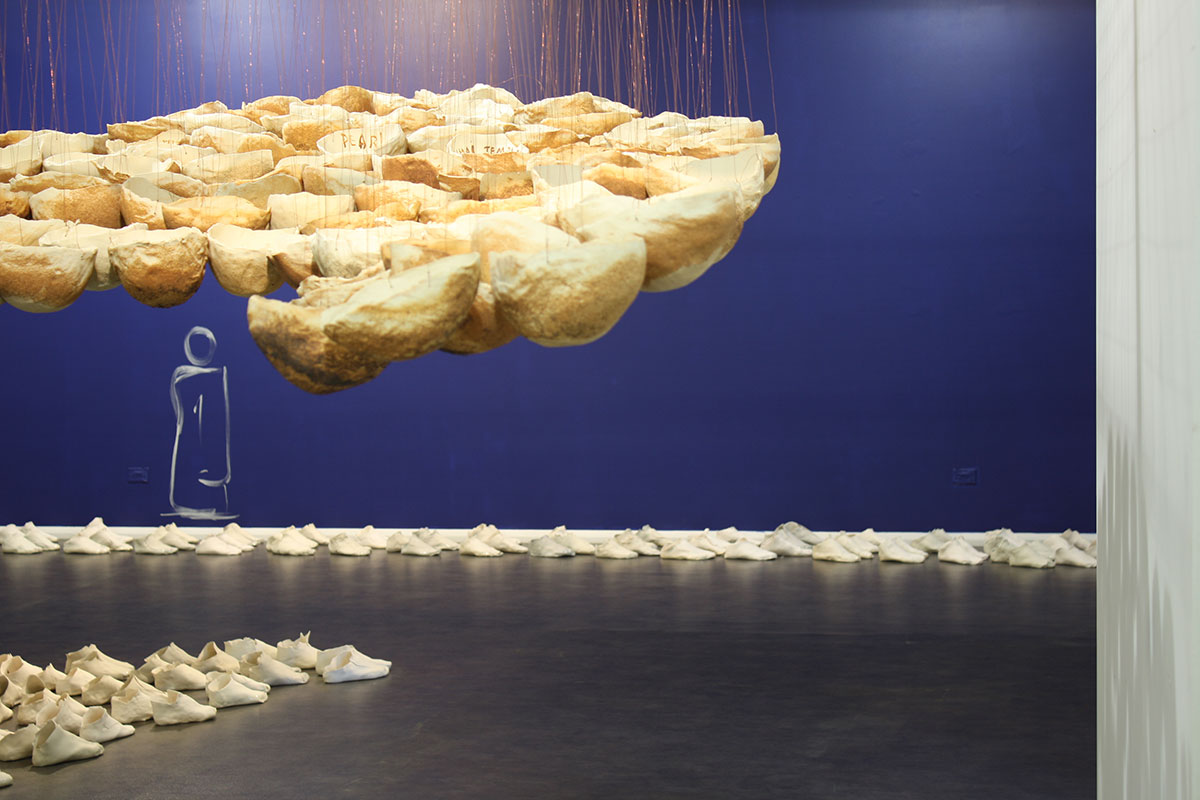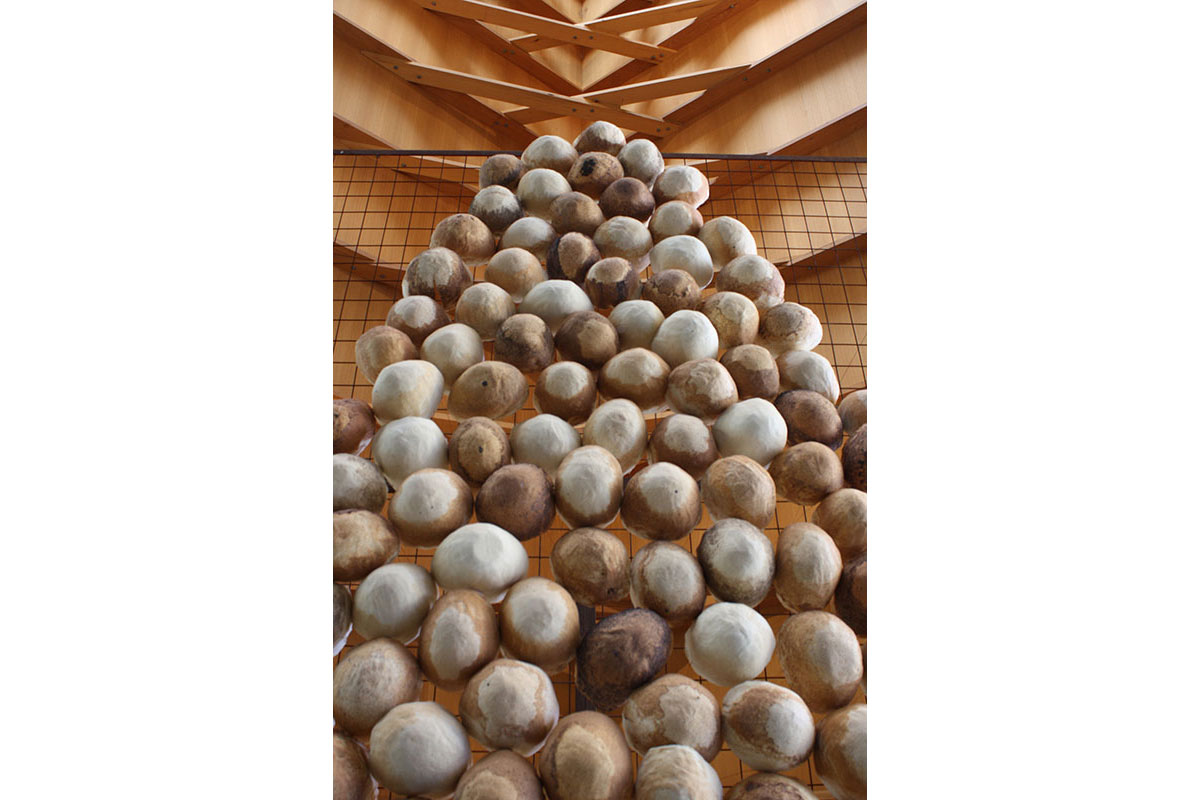Project details
Materials:
ceramic, copper wire, steel
Dimensions:
480 x 340 x 320cm
Awarded the Yarra Valley Arts / Yering Station Sculpture Prize 2016
To hold a thought, a feeling, a memory in your mind for a significant period of time can be difficult, and yet does not the holding of a thought, a feeling, a memory lead somewhere, help you to better understand, to move on from that place. There are examples from all over the world of processes and articles that are used for this purpose. However these were not the first thoughts to go through my head when I saw a mourning or widows cap in the Cumbo Gunnerah Museum at the Red Chief Local Aboriginal Land Council in Gunnedah, NSW. My initial response was simply how beautiful, I was deeply moved by the object, and I could not let go of the image. The following story results from that first encounter.
Women would cover their heads in clay when someone died. Their period of mourning was defined by the length of time it took for the clay to crack and disintegrate. Occasionally men would speed up this process by giving the heads a light tap!
Robert Horne, Cumbo Gunnerah Museum, Gunnedah
I visited Gunnedah for the first time in April 2004. Two experiences stayed with me. The first was a tapestry of colours and patterns created by crops being grown on rich black soils. The second was an Aboriginal ‘mourning cap’ at the Cumbo Gunnerah Museum housed at the Red Chief Local Aboriginal Land Council. I was visiting Gunnedah as part of a group of art students from the Canberra School of Art Environment Studio, a project set up with the assistance of the Murray-Darling Basin Commission. We listened to scientists and economists talk about growing salinity, the fragility of the aquifer, and the impact of changing industry as well as the closing down of the abattoir and a mine. All these things shaping the lives of the community.
My mother had just died. I returned to the art school and put clay on my head to see if it might help me hold my grief. It was a very powerful experience. I found the process soothing and abstracting, once the clay was on my head. I felt distanced from the moment, somehow in a time and place removed from where I was physically, a place where I could think and feel safely. I could remove the clay and fire it resulting in a ‘mold’ of my head, like a fingerprint, a very personal/individual memento of me and that experience.
I returned to Gunnedah in July 2006 to see if I could make an artwork that would somehow represent the community and their loss. The concept was to create caps that would represent community members, both as individuals, and together in a final installation that would reflect them, their place and their stories.
The first step was to gain permission from the Traditional Custodians to make a contemporary artwork inspired by this cultural practice. The project was embraced and women were invited to participate by having their head encased in clay. I learnt about individuals’ lives, their connection to Gunnedah, their families and most importantly felt a commonality of sentiment around the fundamental values of family and place.
Many times I was asked why Aboriginal women put clay on their heads in mourning? It struck me as a strange and very Western question. The idea that there would be a definitive answer and that I would know what that was. Research led me to accounts by anthropologists which varied greatly in terms of how they were made and who wore them, this varied according to place, each different language group having its own mourning practices. The intricacies of the practice belongs to its Traditional Custodians. I wanted to bring into the open a more general understanding of, and respect for, different cultural practices. My own experience, and those who participated agreed, it is a soothing and comforting thing to do.
I would like to thank the Aboriginal women of Gunnedah who enabled me to explore and engage with this cultural practice. Without their guidance and cooperation this project would not have happened. Through their generosity, I was able to re-present ‘mourning’ to a broader community and expand an understanding and respect for different cultures. I was also able to express my own mourning for the history of treatment suffered by First Nations People.
The installation you see here comprises two parts. The hanging caps were made with 186 women from the Gunnedah area. Aboriginal women also made small caps to remove the experience from the traditional practice. These caps are placed on the floor, I see these as acting as sentinels protecting the traditional practice.











